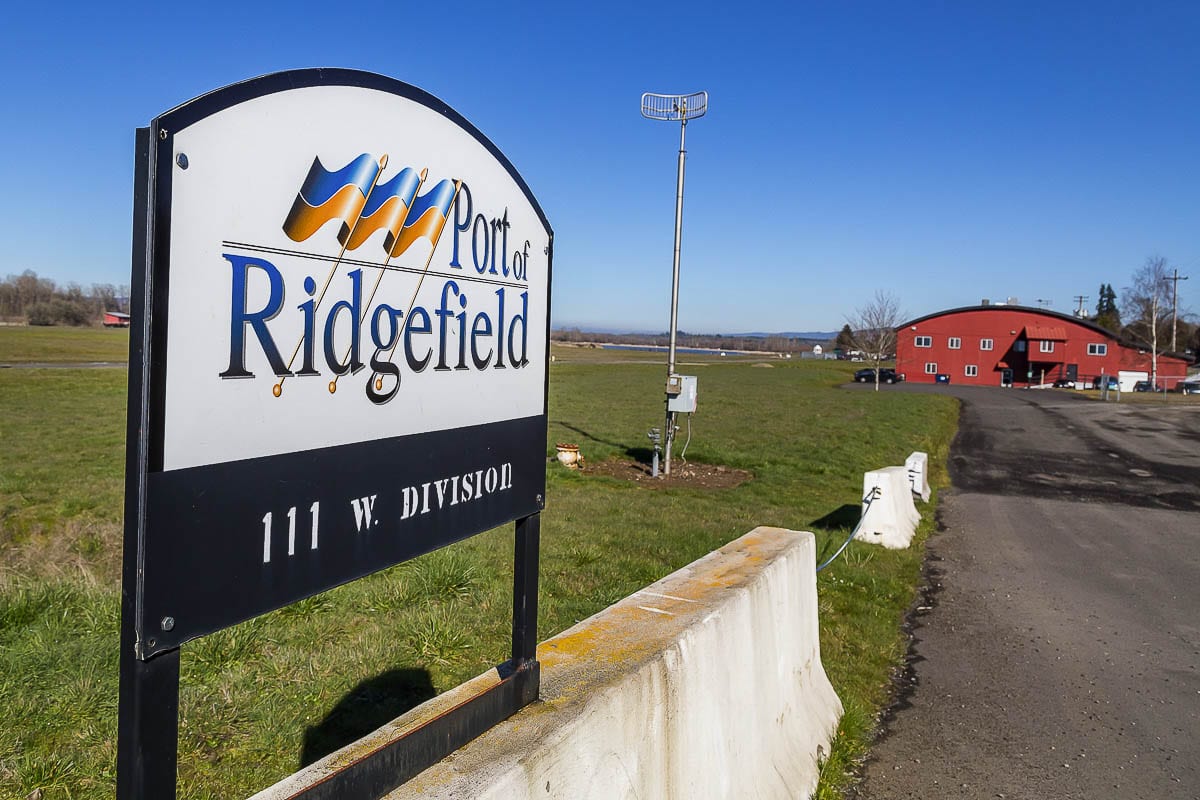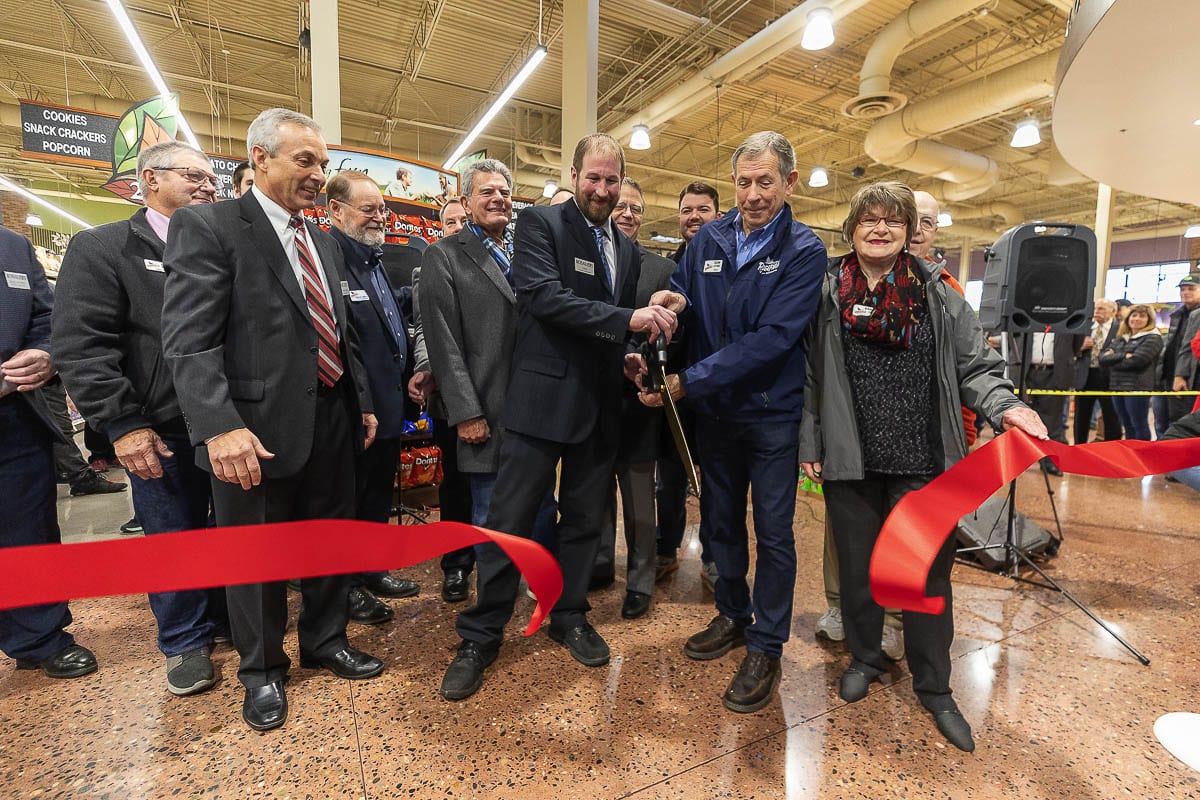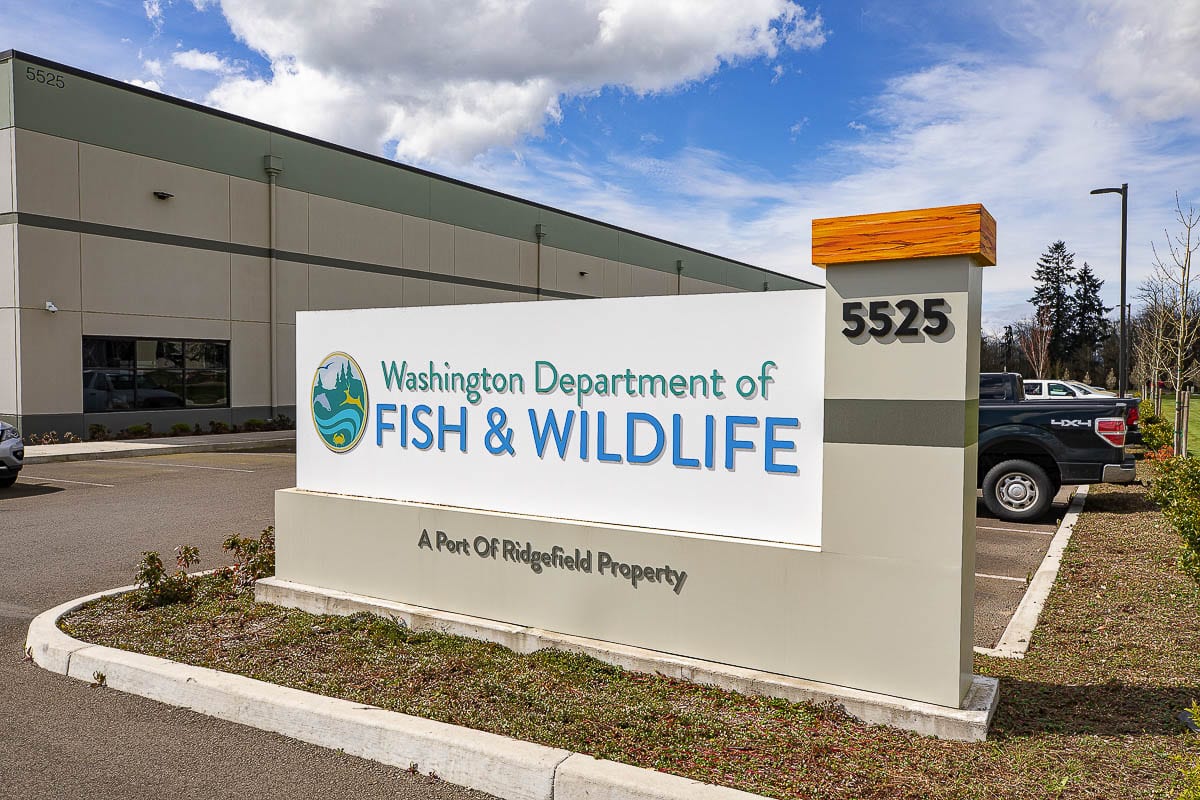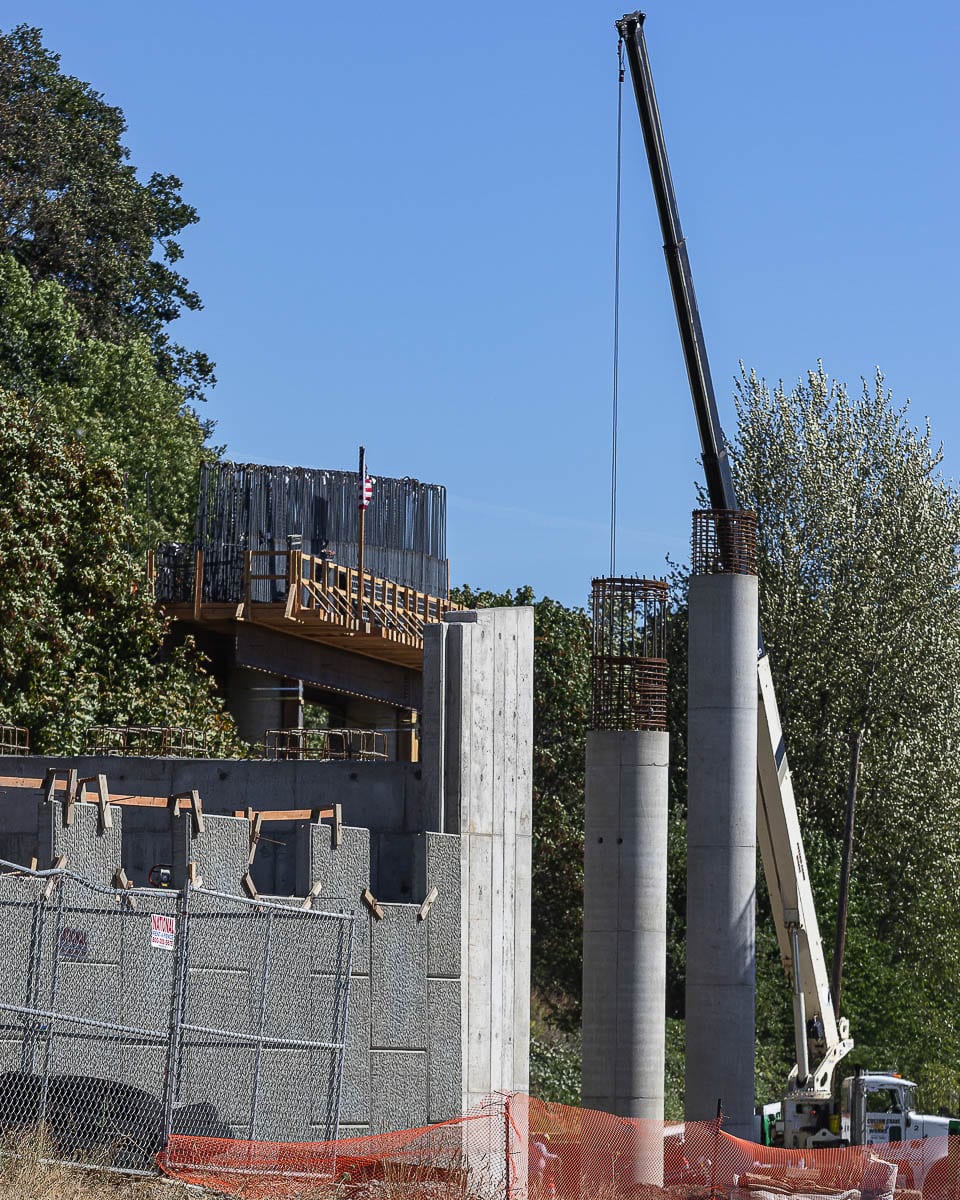City continues to be one of the fastest-growing areas in the state of Washington and the development is keeping pace with that growth
Apparently, it will take a lot more than a global pandemic to slow down growth in the city of Ridgefield. In spite of economic challenges created by restrictions on businesses around the state associated with the COVID-19 pandemic, Clark County’s fastest-growing city continues to thrive.

In the first seven months of 2020, more than half of which was significantly impacted from an economic standpoint by Gov. Jay Inslee’s shutdowns including those on the housing industry, Ridgefield experienced a 38-percent increase in new single-family residential building permits submitted and a 77-percent increase in single-family residential building permits issued.
Ridgefield City Manager Steve Stuart stated the obvious, that the development “was pretty outstanding considering the challenges.’’
Growth and development is nothing new to Ridgefield, which three times in the past decade has been tabbed as the fastest growing city in the state according to the Washington State Office of Financial Management. The last of those three occasions came just last year when the population in the city increased by 8,995, or 15.44 percent, between 2018 to 2019. The population grew by another 875 between 2019 and 2020, an increase of 9.84 percent, which made Ridgefield the fourth-fastest growing city in Washington.

“It’s an easy thing to figure out why Ridgefield is growing,’’ Stuart said. “Drop a pin point in Portland and take a string and extend it to the East, West, South and North. Three of the quadrants are pretty well built out. The last quadrant that has room to grow in terms of land availability is our area.’’
Stuart became Ridgefield’s city manager in 2014 after serving almost 10 years as a Clark County commissioner. He credits leaders of the city for having the vision and foresight to prepare for the growth and development that is currently taking place.
“They knew it was going to happen and they built a good foundation for it,’’ said Stuart, referring to leadership at the Port of Ridgefield, city of Ridgefield and even the county and the state. “They were thinking ahead, even when the recession was in full swing and a lot of people were hunkering down, they were getting a lot of good work done to lay that foundation.’’

An example of that vision and foresight Stuart talked about is Ridgefield’s participation in the Clark Regional Wastewater District. The district was originally formed in 1958 and was formerly known as the Hazel Dell Sewer District. In 1995, the county, the city of Battle Ground and the district entered into a three-way agreement to expand and improve the district. Ridgefield joined the district Jan. 1, 2014.
The district provides services to residents and businesses living and working in unincorporated Clark County and the city of Ridgefield. Sewer service is provided to approximately 100,000 people throughout more than a 47 square-mile service area, stemming from the Hazel Dell neighborhood at the southern end more than 10 miles North along the Interstate 5 “Discovery Corridor.” It provides necessary infrastructure and sewer capacity for all of the development that has and is continuing to take place in Ridgefield.
Another example of the vision that led to the development taking place in Ridgefield is the Interstate 5 overpass improvement project at Exit 14, which was financed mostly with federal funds.
Community survey
A key impetus for Ridgefield’s growth and development was a community survey the city conducted in 2015 and then updated in the Fall of 2019. That survey can be viewed here.
“We asked folks, what is it you want?’’ Stuart said. “What is it you need? What is it you would like to see?”
In the results to the 2015 survey, there was a clear and concise answer from the members of the community.
“The biggest thing, and it wasn’t a huge surprise, they wanted a grocery store; they desperately needed a grocery story,’’ Stuart said. “That was a big thing.’’
On Dec. 7, 2019, that wish was granted to the community when a 53,000-square-foot Rosauers store opened. The store is the anchor to the Discovery Ridge Shopping Center on the southwest corner of Pioneer Street and South 45th Avenue. The center also includes, either already or will in the future, a Taco Bell and MOD Pizza, other restaurants, a tap room and a dental office.

In their responses to the community surveys, Ridgefield-area residents also expressed other needs.
“Obviously, the schools were really important,’’ Stuart said. “Our community said over and over again that was a need. They also expressed a need for additional educational opportunities, jobs, and services and amenities, places for kids to play, trails to walk on and bike on, and then those got wrapped into our plan.
“Since 2016, we’ve been implementing the plan,’’ Stuart said. “That’s what you see on the ground. You see the implementation of a lot of planning and that is work that’s happened for many years.’’
The three subareas
When it came to development and growth in the city, Ridgefield’s leadership team focused on three subareas including the junction, a community hub on Pioneer Street (near the Discovery Ridge Shopping Center) and the downtown/port area.
“One of the things we did in 2016 was instead of having a broad-brush plan, we dove deeper into each of the subareas of Ridgefield and looked at them more specifically,’’ Stuart said. “You’ve got to ask the land what it wants to be. You can’t make it something it’s not. You can’t make it industrial when it’s housing. For each of those subareas, we dove deeper. What is it now what does it want to be and how does it get there?’’
Stuart said the Ridgefield junction was set up to be a job driver because of its large parcels that could serve tenants that are job generators and provided large-scale services. He quickly rattled off a long list of businesses who have either recently moved to the area or has expanded in the area including Flowserve Corporation, Keller Supply Company, United Natural Foods, BedTech Inc., Energy Electric, Mill Plain Electric, Simonds International and the State Department of Fish and Wildlife.

“We’ve seen that job generation and there’s still a lot to come,’’ Stuart said. “There’s still a lot of good land for jobs.’’
Stuart cited a 2019 Employment Lands Inventory Update conducted by the Columbia River Economic Development Council, which can be viewed here.
“The CREDC did their land for jobs study (in 2016) and just did an update recently (2019),’’ Stuart said. “It looked at what specific land around the county is ready, or could be ready, for the generation of jobs. Ridgefield had more jobs-available parcels than anywhere else in the county.’’
Stuart added that one of the key linchpins of the junction-area development was the planned 70-acre Clark College at Boschma Farms site
“We’re not sure when the construction dollars will flow,’’ Stuart said. “We know the design is done and ready. They have partnerships and their foundation has partnerships with industry and other development to put together an innovative and high-quality plan for the area. It’s just a matter of getting to construction. We hope they will get funded next year.’’
The Pioneer Street community hub subarea is a mix of desperately needed services and housing, including higher-density housing options, such as duplexes and apartments. Stuart said access to services and amenities — such as those at the Discovery Ridge Shopping Center — is a key to that subarea.
“The plan was to create this hub of activity that had this mix of activity, services and housing,’’ Stuart said. “That doesn’t just happen. The City Council worked with us to put together a relationship with a national recruiting firm to identify good retail concepts that fit who we are in Ridgefield and then we would go after them. That’s what happened with Rosauers. That was great for the community that we could pull that off. We needed the straw that stirred the drink and that was Rosauers.’’
A 10-acre city park was also created in this subarea that was a partnership with Pioneer Village. It’s a commercial piece with multi-family housing. The 10-acre park has an active plan area, trails, open space and a green belt designed to enhance the natural environment.
When it comes to the downtown/waterfront subarea, Stuart gives a great deal of credit to the many years of work, and nearly $100 million in cost, the Port of Ridgefield invested to clean up environmental waste at the site that formerly served as the home of Pacific Wood Treating.
“It’s beautiful, green and field ready,’’ Stuart said. “And infrastructure is going in to support it.’’

That infrastructure includes the construction of the Pioneer Street Rail Overpass project. The final phase of the project is underway and is expected to be completed by the Fall of 2021. When completed, the overpass will provide safe and guaranteed pedestrian and auto access between downtown Ridgefield and the waterfront, including the port’s 41-acre mixed-use development site. Phases 1 and 2 were completed in 2013 and 2014 respectively.
“When that is finished, I think you will see the waterfront light up,’’ Stuart said.
Stuart also lauded Ridgefield’s Main Street Program. “We have volunteers who have spent a lot of time getting that going,’’ he said. “They work directly with businesses, and indirectly, to support them. We have also have a great Chamber of Commerce.’’
Fruits of those efforts include Ridgefield Craft Brewing Co. and the Olde Library Inn bed and breakfast.
“We’re seeing new businesses, six new businesses this year just in our downtown subarea,’’ Stuart said. “We need that center of gravity, good businesses in our downtown. It’s the heart of our city.’’
Ridgefield School District
The growth in the city has necessitated considerable building expansion issues for the Ridgefield School District. Significant construction has taken place in recent years but the district’s latest plans for expansion have been thwarted by voters in the city.
“The school district is one of those areas that we’ve spent a lot of time with because it’s one of the main reasons the community loves this place,’’ Stuart said.
Despite that, and unlike the development that continues in the rest of Ridgefield, it appears that the COVID-19 pandemic has greatly impacted the efforts of future construction of school district facilities.
Voters in the Ridgefield School District rejected a $40-million general obligation bond on the ballot in the Aug. 4 primary election. In February’s special election, 59.19 percent of Ridgefield voters approved of a $107 million bond program, narrowly missing the super majority of 60 percent plus one needed for approval. District officials then decided to ask for a modified bond program of $40.465 million in the August primary election, but voters overwhelmingly rejected that proposition with 52.52 percent voicing their opposition.
Obviously, Ridgefield residents have strong opinions about their property tax rates. Stuart said the city is aware of that and as a result, the city tries to put as much of the burden of costs for development on the backs of the developers as possible.
“We have very high impact fees,’’ said Stuart, referring to the fees charged to developers. “There’s a reason for that.’’
Future growth
In the two community surveys the city has conducted in recent years, residents consistently talked about quality of life and not losing the small-town charm that is in Ridgefield’s DNA.
“A lot of work has gone into making sure that small-town charm and quality of life continues to be here and is enhanced and continues to grow,’’ Stuart said. “It’s threaded through all of the work that we do.
“One of the challenges when you’re growing this fast, it can put stress on the services and infrastructure,’’ Stuart said. “That’s been a lot of our work to do everything we can to keep up and in some ways get ahead. We look for land all the time for parks and trails and try to lock that up before it gets developed. We are a high-quality place and it’s going to stay that way. A lot of work goes into that to make sure we have the infrastructure and amenities that the folks need.’’
Earlier this year, Ridgefield’s population was reported to be 9,770. Stuart said city leaders’ current planning horizon extends to 2036 when they estimate Ridgefield will have approximately 25,000 residents.
“I have not seen anything that would indicate anything different,’’ Stuart said. “It’s not just Ridgefield. The Discovery Corridor extends from the I-5/I-205 split to the county line. There’s significant opportunity for growth, an opportunity to do it right in a way that brings good-paying jobs, healthcare and educational opportunities. In a way that not only functions well, but has a great form to it as well.’’




